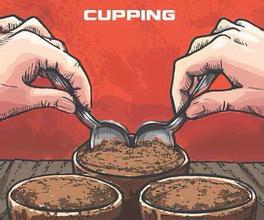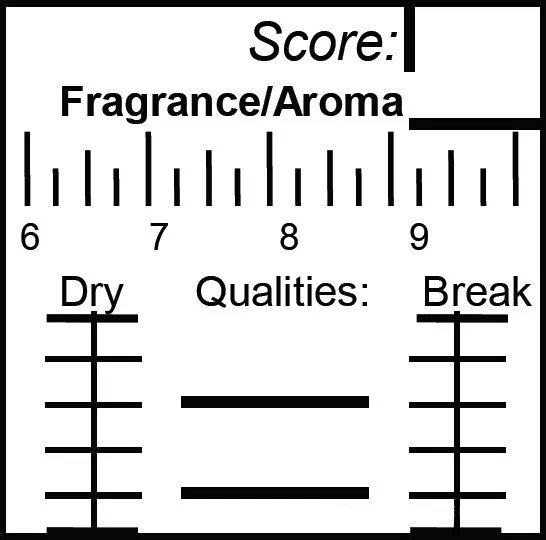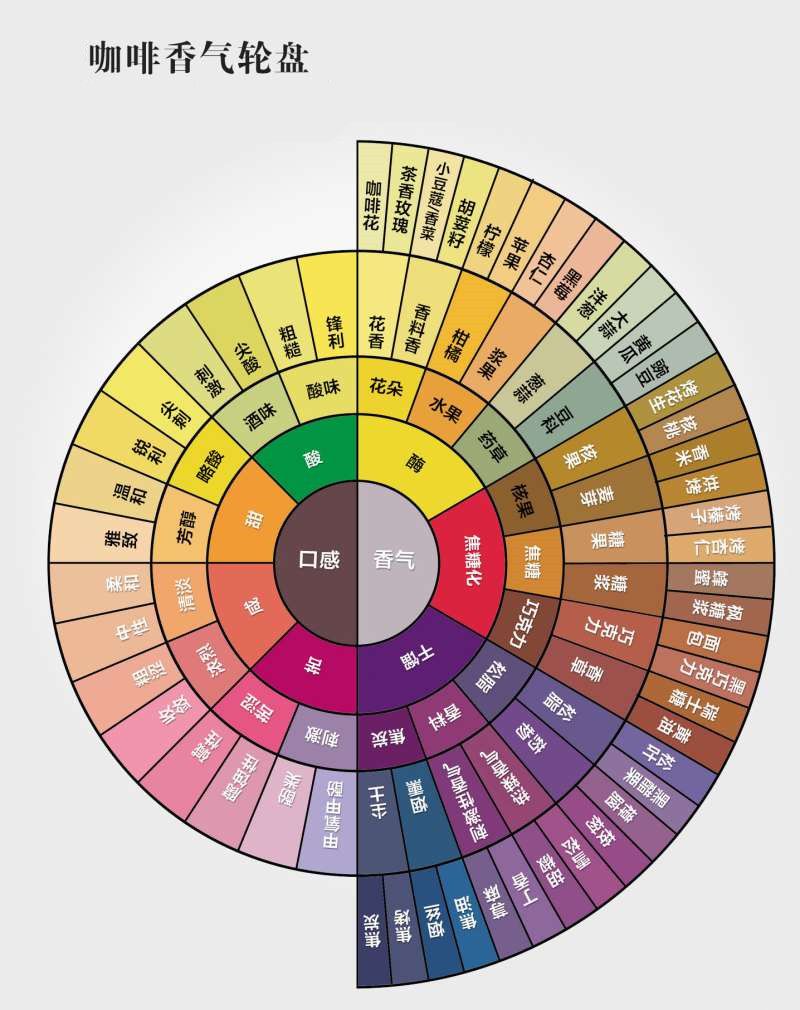Analysis of coffee cup testing knowledge points: introduction of common terms in Chinese and English for coffee cup testing

When sipping coffee, we need to distinguish whether the flavor, body, acidity and wet aroma of coffee are pleasant. Most tasters judge coffee by the following criteria. While tasting the coffee, you should try to discern whether the flavor, body, acidity and aroma of the coffee is pleasant, or unpleasant. Here are the criteria that most tasters use to judge coffee.
Acidity: Acidity is an essential characteristic of coffee and is the dry sensation produced by coffee on the edge of the tongue and back of the palate. Coffee acidity acts like red wine, with a strong and exciting texture. Without sufficient acidity, coffee tends to be bland. Acidity is different from sourness, which is an unpleasant and undesirable taste characteristic. Acidity is a desirable characteristic in coffee. It is the sensation of dryness that the coffee produces under the edges of your tongue and on the back of your palate. The role acidity plays in coffee is not unlike its role as related to the flavor of wine. It provides a sharp, bright, vibrant quality. With out sufficient acidity, the coffee will tend to taste flat. Acidity should not be confused with sour, which is an unpleasant, negative flavor characteristic.
Wet aromas are difficult to separate from flavors. Without smell, our basic tastes would be sweet, sour, salty and bitter. Wet aromas enrich the soft palate's ability to distinguish flavors. Subtle, subtle differences, such as "floral" or "bouquet" characteristics, come from the moist aroma of brewed coffee.
Body is the sensation of coffee in the mouth, i.e., the stickiness, thickness, and richness of coffee acting on the tongue. Drinking whole milk feels different from drinking water, which is a good example. Our perception of coffee's body is related to the oils and solids extracted from coffee. Indonesian coffee is significantly more mellow than South American and Central American coffee. If you can't determine the difference in body of several coffees, try adding the same amount of milk to the coffee. Full-bodied coffee retains more flavor when diluted with milk.
Flavor is the overall sensation of coffee in the mouth. Acidity, wet aroma and body are all components of flavor, and it is their balance and homogeneity that gives rise to our overall sense of flavor. Flavor is the overall perception of the coffee in your mouth. Acidity, aroma, and body are all components of flavor. It is the balance and homogenization of these senses that create your overall perception of flavor. The following are typical flavor characteristics: General flavor characteristics:
Rich-refers to body and richness; complex-perception of multiple flavors; balanced-all basic taste characteristics are satisfactory, and no one taste overshadows another.
Fresh, bright, dry, light, or lively--(common in Central American coffee) caramelized--like sugar or syrup; chocolatey--like unsweetened chocolate or vanilla aftertaste; delicious--subtle, delicate flavor felt on the tongue (washed arabica beans of new guinea); earthy--earthy aromatic qualities (typical Sumatra coffee); aromatic-an aromatic quality that ranges from floral to spicy; fruity-an aromatic quality reminiscent of berries or oranges; luscious-round, smooth on the palate, lacking acidity; nutty-a nutty aftertaste; spicy-a flavor and aroma reminiscent of spices; sweet-non-astringent; Wild--a wild flavor not generally considered pleasant; common in Ethiopian coffee; bouquet--an aftertaste reminiscent of a fully aged wine (common in Kenyan and Yemeni coffee).
Typical specific desirable flavor characteristics: Bright, Dry, Sharp, or Snappy- (typical of Central American coffees); Caramelly -candy like or syrupy; Chocolaty- an aftertaste similar to unsweetened chocolate or vanilla ; Delicate- a subtle flavor perceived on the tip of the tongue (typical of washed New Guinea arabica); Earthy- a soily characteristic (typical of Sumatran coffees); Fragrant- an aromatic characteristic ranging f rom floral to spicy; Fruity- an aromatic characteristic reminiscent of berries or citrus; Mellow- a round, smooth taste, typically lacking acid; Nutty- an aftertaste similar to roasted nuts; Spicy- a flavor and aroma reminiscent of spices; Sweet- free of harshness; Wildness- a gamey flavor which is not usually considered favorable but is typical of Ethiopian coffees; Winy- an aftertaste reminiscent of well-matured wine (typical of Kenyan and Yemeni coffees).
Unpleasant flavor characteristics: bitter--a taste derived from the root of the tongue, mostly due to overbaking; dull, non-irritating--neutral flavor; charred--with a charred carbon flavor; lifeless--same as "Flat"; miscellaneous--musty, reminiscent of earthy taste; earthy--same as "miscellaneous"; bland--no sour, lacking moist aroma and aftertaste; grassy--a smell reminiscent of freshly cut grass; coarse--a harsh, scratchy, coarse quality; cloudy--thick and not strong; stiff--starchy, like boiled pasta water; coarse--a tongue sensation, like salt; rubbery--an odor resembling burnt rubber (commonly found in dry-processed Robusta beans); soft--same as "bland, non-irritating"; sour--sour taste resembling unripe fruit; thin--non-acidic, usually caused by insufficient extraction; turpentine--taste like turpentine; clear-water--lack of body and stickiness in the mouth; rough--wild quality.
Typical specific undesirable flavor characteristics:Bitter- perceived on the back of the tongue, usually a result of over roasting;Bland- neutral in flavor;Carbony- burnt charcoaly overtones;Dead- see "flat";Dirty- a mustiness reminiscent of eating dirt ;Earthy- see "dirty" ;Flat- lack of acidity, aroma, and aftertaste ;Grassy- an aroma and flavor reminiscent of freshly cut lawn ;Harsh- a caustic, clawing, raspy characteristic;Muddy- thick and dull;Rioy- a starchy texture similar to water which pasta has been cooked in;Rough- a sensation on the tongue reminiscent of eating salt;Rubbery- an aroma and flavor reminiscent of burnt rubber (typically found only in dry-processed robustas) ;Soft- see "bland" ;Sour- tart flavors reminiscent of unripe fruit ;Thin- lacking acidity, typically a result of under brewing;Turpeny- turpentine-like in flavor;Watery- a lack of body or viscosity in the mouth;Wild- gamey characteristics.
Source: Network
Important Notice :
前街咖啡 FrontStreet Coffee has moved to new addredd:
FrontStreet Coffee Address: 315,Donghua East Road,GuangZhou
Tel:020 38364473
- Prev

Coffee cup test knowledge point: teach you how to use SCAA coffee cup test meter to learn cup test
Coffee Cupping, Chinese translated as coffee cup test, cup taste or cup evaluation, is a very magical and simple coffee sensory evaluation method. The quality of coffee is judged by taste, which is called coffee cup test. And the person who evaluates is called coffee quality appraiser. Similar to wine tasting, cup testing, to make coffee flow back and forth in the mouth, make full use of your taste and smell to feel coffee
- Next

The main points of the knowledge of coffee flavor wheel: a detailed analysis of the learning essentials of SCAA coffee flavor wheel
Coffee has only four kinds of water-soluble tastes: sour, sweet, bitter and salty, some sour and sweet, only volatile, which need to be identified by smell; some are non-volatile, only water-soluble, and need to be identified by taste buds; and some sweet and sour ingredients are both volatile and water-soluble, so sour and sweet often show the dual senses of smell and taste. As for bitterness and saltiness, there is no volatility.
Related
- What is the meaning of lactic acid fermentation with coffee bean treatment?
- How to judge the state of foam by sound?
- How does the latte pull out the unicorn pattern? Come to get for a little trick to improve the flower pull!
- Will flower pulling affect the taste of the latte?
- Do you know the history of coffee?
- The difference between honey treatment and sun washing what is raisin honey treatment?
- What kind of milk can a novice use to make coffee foam to keep the foam longer? The correct method and skills of milking tutorial sharing
- Why do washed coffee beans taste sour? Flavor characteristics of washed Coffee
- Introduction to the skill of how to practice the size and height of water injection around the circle of hand-brewed coffee
- How do beginners practice coffee flower drawing from scratch?

